
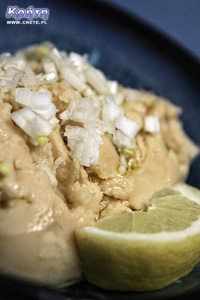
Fava is a popular appetizer in Greece somewhat similar to hummus, but unlike it, it is made from yellow-skinned peas. Fava is easy to prepare and can be served both hot and cold, for example with good bread or vegetables. It also tastes fresh after preparation. And after cooling, you can store it in the fridge for a few days. The proportions that I give in the recipe are enough to prepare a medium-sized bowl.
1. The preparation of the fava begins with soaking the peas. After a few hours, drain it and rinse thoroughly under running water. Then, place the peas in a pot and pour water so that its level reaches 1-1.5 cm above the pea level. We add bay leaves.
2. Fry chopped onions (and possibly garlic) in olive oil until they are glazed and add to the pea pot. Peas cook over low heat under cover for 1-1½ hours until tender, stirring once in a while.
3. At the end of cooking, the peas will begin to overcook and disintegrate. If it absorbs all liquid before the end of cooking, add some hot water. At the end, remove the bay leaves and season with salt and pepper.
4. Mix the cooked peas with a blender. When mixing, add about 1/3 of the cup of olive oil and lemon juice. We translate into a bowl, sprinkle with a pinch of oregano and optionally pour it over with olive oil.
It can be served with finely chopped onion or parsley.
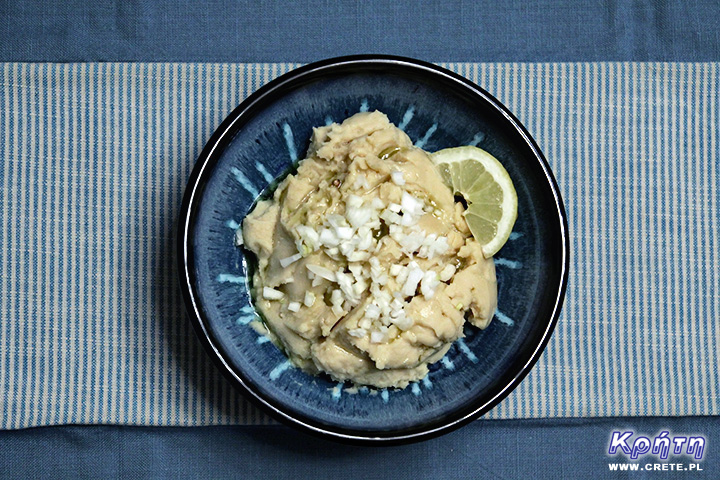
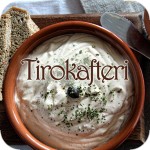
Tirokafteri is a Greek dip made on the basis of feta, excellent for bread or grilled vegetables. The way it is seasoned differs depending on the region of Greece. You can find versions with the addition of garlic, lemon juice, hot pepper or oregano. In the most orthodox version it consists only of feta, olive oil and hot pepper.
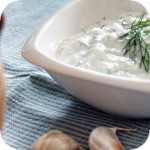
Tzatziki is one of the simplest and most popular Greek sauces, which will be a great addition to many dishes. Although it is usually served to gyros in pita pancakes, it will also be great for grilled and fried vegetables or as an addition to meats.
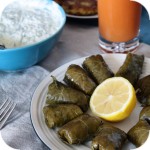
Dolmades is one of the most popular Greek meat dishes. It occurs both in the vegetarian version and with meat. Young grape leaves are needed to prepare them. And it is in the leaves that the key to success lies. They must be young and very delicate. The best and the most delicate ones are collected around May. However, if you do not have the opportunity to collect fresh leaves, you can use ready-made leaves from the lagoon. However, the effect will be better if you use fresh leaves.
Komentarze
komentarz z
Witam, a znacie jakiś przepis na koktajl z wykorzystaniem ouzo? :-)
komentarz z
Koktajl to nie ale my mieszamy ouzo z colą i lodem. :)
komentarz z
E tam, my tradycyjnie w kieliszku kreteńskim kupiliśmy w Agios fajny zestaw
komentarz z
Grecy też się krzywią na taką mieszankę, ale to serio wchodzi dobre :D
Wypełnij poniższy formularz aby dodać komentarz
lub kliknij w poniższy link aby skorzystać z możliwosci komentowania przez facebooka:
https://www.facebook.com/crete.poland/posts/10154048295942551